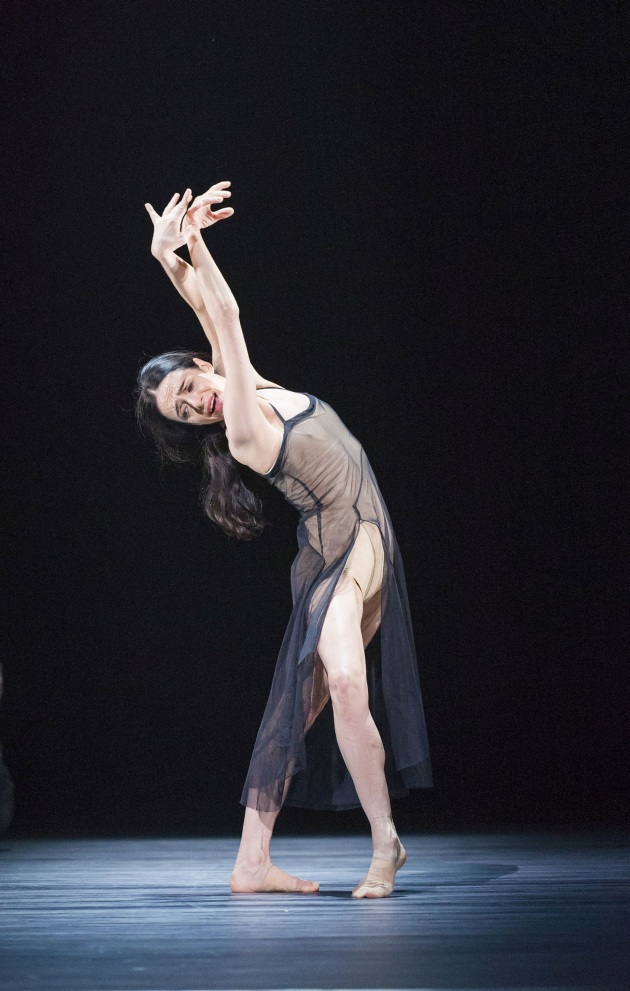With age comes wisdom
Wayne McGregor has demonstrated how much of a waste it can be for mature artists simply to be put out to pasture as non-dancing kings, queens, eccentrics and crones.”
– Judith Mackrell, 2015
In late June the Royal Ballet flew into the Queensland Performing Arts Centre on a red carpet of expectation and flew out with a critically acclaimed salute. They brought with them a program full of originality and risk (Wayne McGregor’s Woolf Works and Christopher Wheeldon’s The Winter’s Tale). They also bought their stars and a winning ingredient missing from dancers in most ballet companies at present: age.
Alessandra Ferri, who opened McGregor’s Woolf Works as the central characters, Virginia Woolf and Mrs Dalloway, is 54 years old, her alternate cast, Mara Galeazzi, 44. Edward Watson, the wounded soldier, is 40. Federico Bonelli, 39. Gary Avis, 47. Movement was designed around their mature joints, but they were dancing, not just filling the stage with hand gestures and cocked eyebrows. Ferri’s trademark legs and feet were still there (en pointe), as were her dramatic stage eyes, which carried emotion past the balcony’s top tier. I thought no dancer looked old. Indeed, the cast’s appropriate age spread gave weight and believability to characterisations; a trait not synonymous with ballet. So why has age, on dance’s stage, not been encouraged?
Judith Mackrell, arts critic for The Guardian, believes there is an “institutional neglect of older dancers”. There are practicalities behind this, one being that older dancers break more easily. Another is aesthetic, the losing of shape and form. But dominating these considerations, is the lack of repertoire suited to the aging dancer. Marius Petipa’s demanding classics, which are standard fare, expose age. You need a company the size of the Royal Ballet – around 85 – to accommodate the odd season and night off… and of “Royal” financial means to take creative repertory risks.
In addition, dancing through the age barrier, even when supported by a company, may not interest the artist. The daily studio grind of relentless pliés and tendus, can wear thin, as can the repetition of repertoire and the heavily dictated last-minute schedule (which also makes child-care problematic). Performance anxiety can worsen with age. And often kids, life, paranoid thoughts – “I’d better move on before it is too late to retrain” – take precedence.
So artistic directors struggle with accommodating and retaining senior dancers; even if wanted. Yet for dance to continue evolving as an art form, I believe its leaders and creatives must find ways to keep its elders involved and interested. Aboriginal culture places great emphasis on elders and storytelling to instill lineage; a historical chain. Similarly, dance – as ephemeral as spoken words and thoughts – requires elders to pass its traditions. I would argue there are too many holes in our storytelling fabric. Dance’s preservation devices – of notation, annotation and video recording – requires past performers to infuse meaning into these subjective chronicling devices.
More than other performative art forms, dance is particularly susceptible to the age drain. Take music, opera, acting and musicals: they all house age. Dance, by its exacting physical nature, struggles. There have, however, been age-embracing dance projects and companies. Jiri Kylian’s Netherlands Dance Theatre III (NDT III), a company for dancers 40 and over, springs to mind. Recently, Momentum, a “45 plus” dance ensemble has been established in Perth. And in repertoire (to date), Graeme Murphy has been most successful at utilising age on stage. His Nutcracker and Tivoli – the latter starring a skipping roller-skater; the late great Harry Haythorne – are good examples. Predominantly, however, youth is dance’s over-riding performative voice.
Too many of our important storytellers have moved from the theatre’s lights into real estate, Pilates, physiotherapy and personal training. Older dancers are critical: they supply artistic support, as peers, for the younger generation to flourish; inspire by example (as did Alessandra Ferri); create three dimensional characters on stage; and form a necessary link in dance’s transient chain. Therefore, I believe, for the next generation’s growth and our art form’s evolution, we need to keep investigating ways to keep our elders in the village circle; and on stage. Wayne McGregor’s made a noteworthy start.
- MATTHEW LAWRENCE
Matthew Lawrence is a former principal artist with the Australian Ballet, Birmingham Royal Ballet and Queensland Ballet. He is currently an associate lecturer for the dance department of the Queensland University of Technology.
Photo above is of Alessandra Ferri in the Royal Ballet's 'Woolf Works' by Wayne McGregor. Photo: TRISTRAM KENTON.
This article appeared in the Oct/Nov 2017 issue of Dance Australia. You could have read it nearly a year ago. Subscribe here and never miss an issue.



